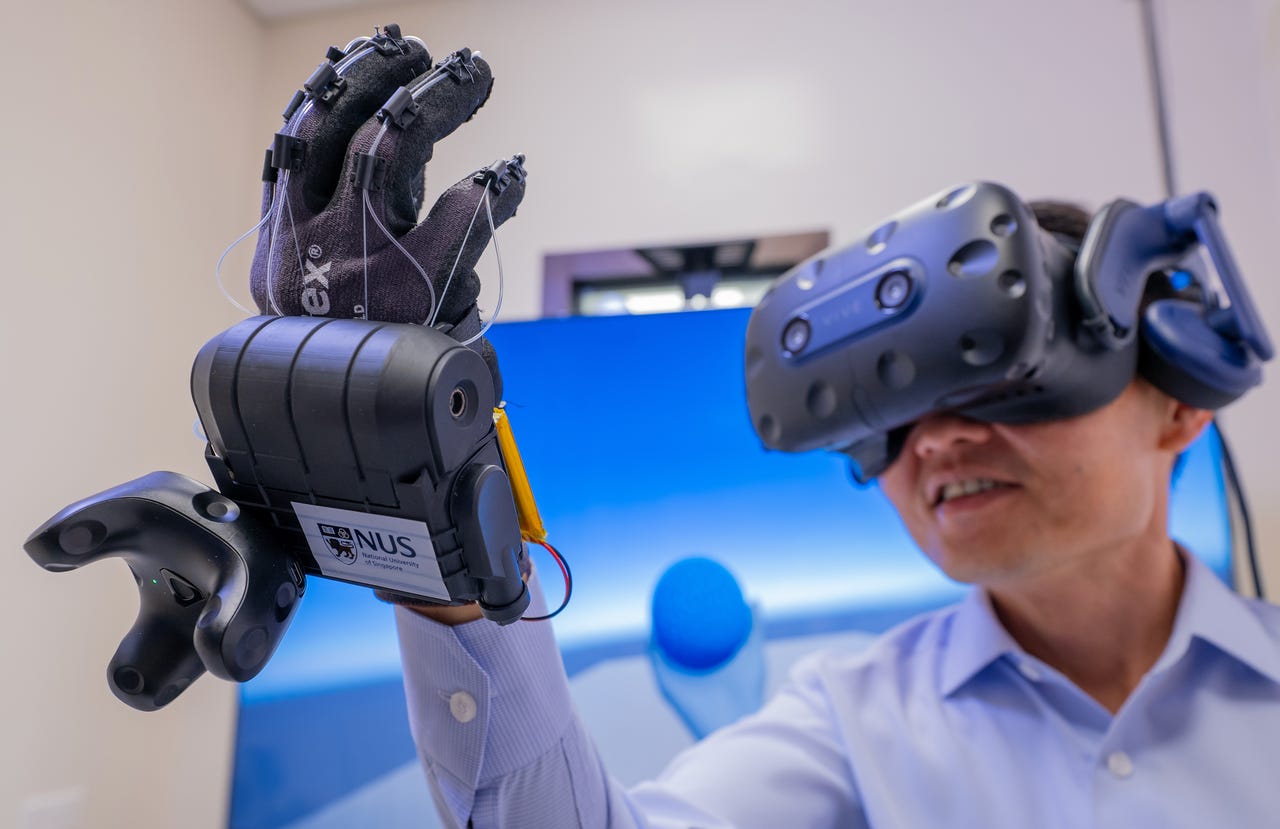Singapore researchers create glove with 'enhanced' virtual touch


HaptGlove uses haptic feedback to enhance users' virtual experience.
Researchers from the National University of Singapore (NUS) create gloves that will enable users to more realistically experience the "feel" of objects in virtual environments. Touting the creation as different from existing technologies, they say the HaptGlove delivers real-time pressure to fingertips and simulates the texture of objects.
Innovation
The glove taps haptic feedback and pneumatic control that is embedded with the researchers' microfluidic sensing technology. This helps shrink the size and weight of the glove, without the need for bulky accessories, according to the NUS team.
HaptGlove features five pairs of haptic feedback modules, one for each finger, that are controlled wirelessly to read the VR object with regards to its shape, size, and texture.
A microfluidic pneumatic indenter pushes real-time pressure to the wearer's fingertips, enabling him to "sense" contact when the avatar touches, grabs, and moves the VR object. The glove further restricts the wearer's finger positions to simulate the shape and texture of the object.
Also: Should you pre-order HTC's VIVE XR Elite headset?
The NUS researchers noted that while haptic gloves were not new, products currently available in the market typically used vibration motors and did not provide a realistic sense of touch. For instance, they could not accurately simulate the shape or hardness of a VR (virtual reality) object.
Others that used pneumatic actuators to generate a sense of pressure, but these were often bulky in design and restricted the user's movement.
"My experience with VR and the metaverse has always been unsatisfactory," said Lim Chwee Teck, director for NUS' Institute for Health Innovation and Technology, who leads the research team. "VR should not be just about a visual and auditory experience; it should present the ability to interact with VR objects. However, current methods of pressing on a virtual panel or interacting with another avatar lack the sensation of touch that we experience in the real world."
Also: Is Apple sweating yet? These 4 companies just turned up the heat at CES
With the use of software developed by the researchers, HaptGlove clocks a visual-haptic delay of less than 20 milliseconds, which NUS said is faster than conventional haptic gloves. Weighing at 250 grams, it also is lighter than competing products in the market, which weigh 450 grams.
HaptGlove was first conceptualised in 2019 and a prototype was developed two years later, with 20 users roped in to test the product.
The NUS researchers have filed for patent and are looking to commercialise the glove within two years, with the aim to do so at half the price of products currently sold in the market, which typically cost between SG$5,000 ($3,786) and SG$20,000 ($15,145).
Also: Best of CES 2023: 6 innovations that will shape the future
Efforts here are led by the university's spinoff unit Microtube Technologies, which focuses on the development of sensing technologies for games and metaverse.